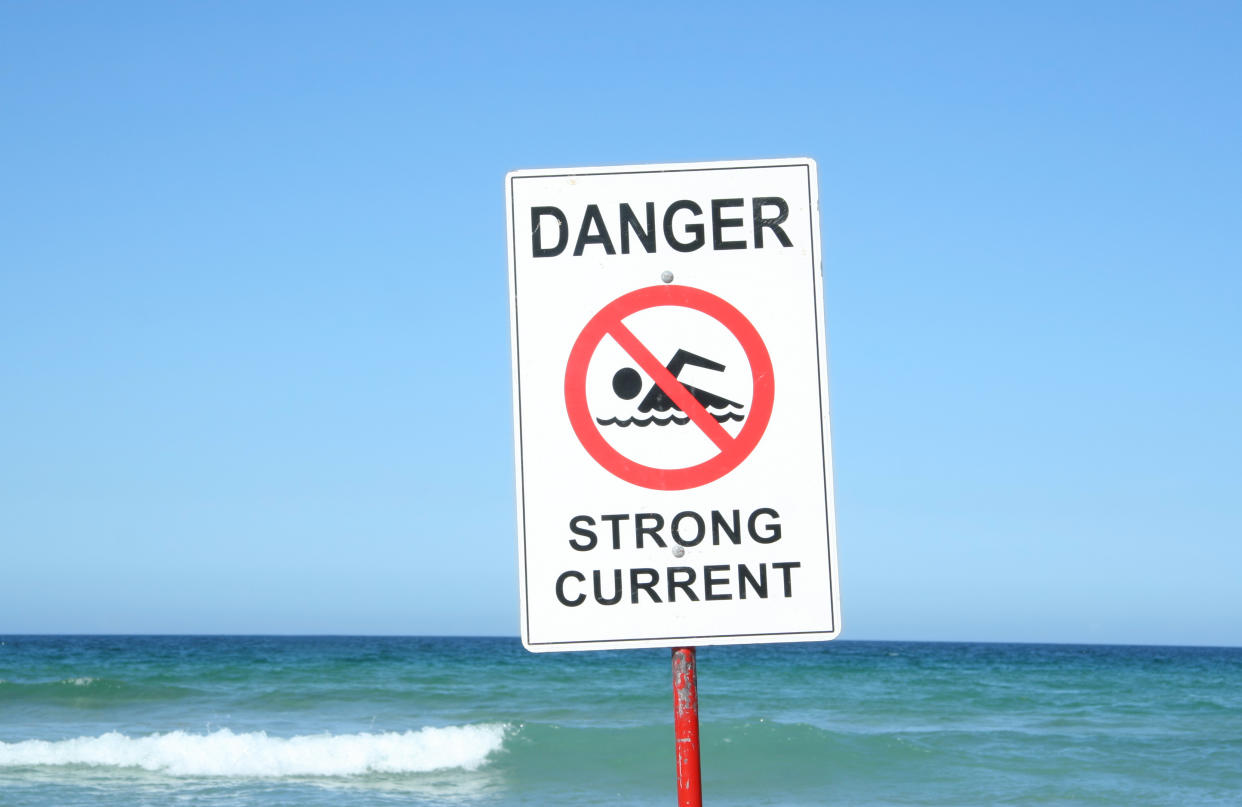How to Stay Safe From a Rip Current

Warning Sign "Danger Strong Current" at the beach. Credit - Getty Images
At least six people swimming along Florida’s coast died over the weekend after getting caught in a series of rip currents, bringing attention to one of the many dangers of the sea.
Experts say that there are many precautions people can take to stay safe from rip currents—which can move as fast as eight feet per second and faster than any Olympic swimmer.
Rip currents are narrow channels of water that move people away from the shoreline and cause some 100 drowning fatalities every year. “At the beach, you have waves and water crushing up onto the sand, and that water needs to go somewhere, right? And so rip currents are locations along the beach where that water will flow back out to sea,” National Weather Service Community Engagement Lead Douglas Hilderbrand tells TIME.
Rip currents are experienced along the East, Gulf, and West coasts of the U.S., as well as the Great Lakes. “Even in the Gulf of Mexico, where people think the waves are smaller than the Atlantic, you can still get very dangerous rip currents,” says Hilderbrand. This year rip currents have been particularly deadly in Puerto Rico, though the Outer Banks or Florida Panhandle can also see a high number of drownings, he says.
These types of currents vary in strength, but can pose a risk to even the most experienced swimmers. More than 80% of all beach rescues are due to rip currents, according to the United States Lifesaving Association).
There have been at least 16 reported deaths already in 2024. Here’s how to stay safe during a rip current.
How to spot a rip current
Spotting a rip current may even be difficult for trained lifeguards, making it even harder for the average beach-goer. It might be easiest to spot a rip current by first looking at where waves are crashing to then find the gaps in the water. “The best description that we can give is that it's an area where you don't see a lot of breaking waves, and don't see the white foamy water of a crashing wave. You actually see a lack of waves,” Hilderbrand says. Surf Life Saving of New South Wales notes that rip currents may also be seen as a gap of seemingly calmer and darker water. Debris or seaweed moving towards the sea may also be indicative of one.
Hilderbrand says that people swimming at a beach with a lifeguard should feel at ease as they often designate safe swimming areas with flags in the sand.
How to stay safe
Basic water safety advises people to always swim near lifeguards and know their limits within the water. “Your children [may be] comfortable swimming at the neighborhood pool or the backyard pool, [but] the ocean is a completely different environment,” Hilderbrand says.
But if you do find yourself caught in rip current, the most important thing is to remain calm. Trying to swim against a rip current will cause great fatigue, which will only increase the possibility of drowning. “There's no downward force from rip currents. It's going the opposite direction of the shoreline,” says Hilderbrand. “If you were able to stay calm and float, that rip current eventually ends.”
To break the grip of the rip current, people should look for waves (which will indicate that they are out of the rip current area) and ride those waves to shore. Swimming parallel to the shore until you can get out of the current is the best bet.
If there are lifeguards on duty, or others nearby, you should try to ask for help by raising your hand, or calling out.
If a loved one is caught in a current, the best thing to do is reach out for additional support to avoid being subject to what experts refer to as a secondary drowning.
“Stay calm. Activate that emergency process, whether it's calling 911, shouting to somebody to call 911, or get[ting] the attention of a lifeguard. Try to find something that could be used as a flotation device, like a kid's boogie board, or floaty [to help],” says Hilderbrand. “Take an emotional pause before taking the action to go into the water.”
Contact us at letters@time.com.

 Yahoo News
Yahoo News 
